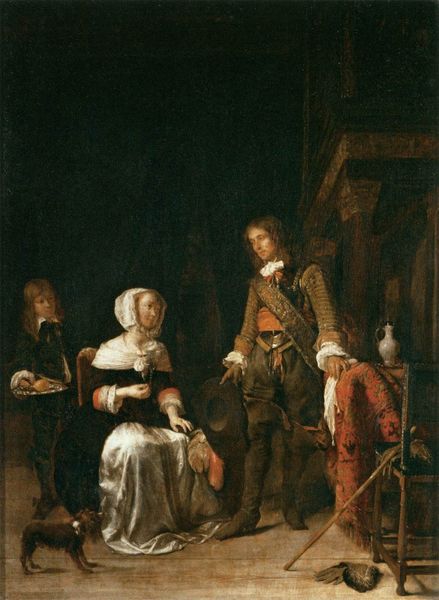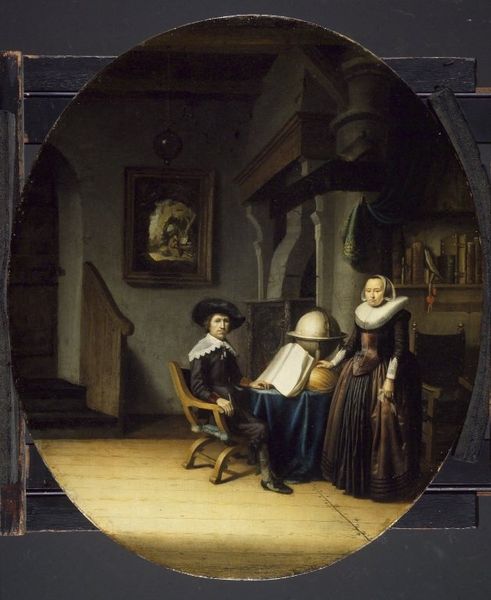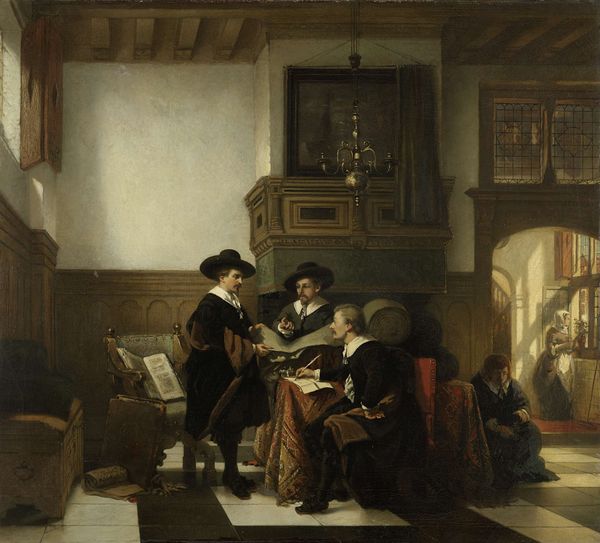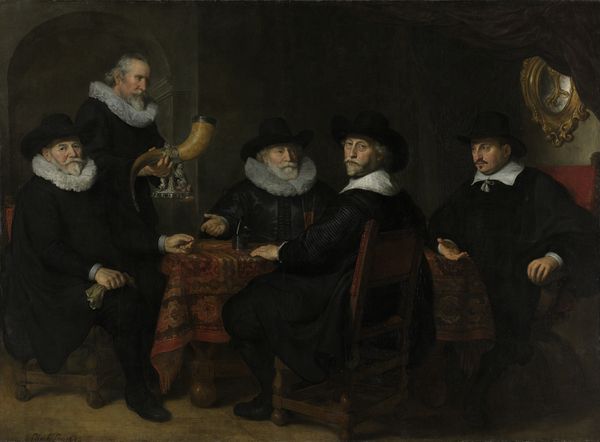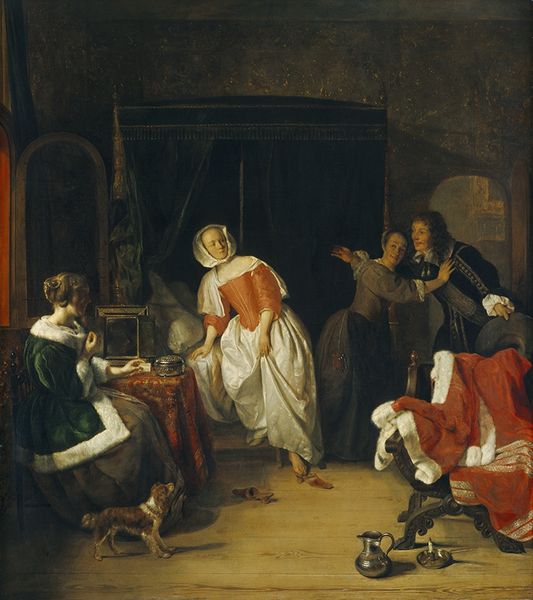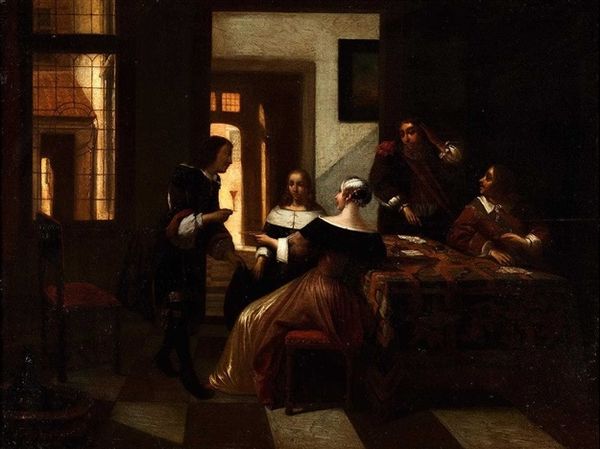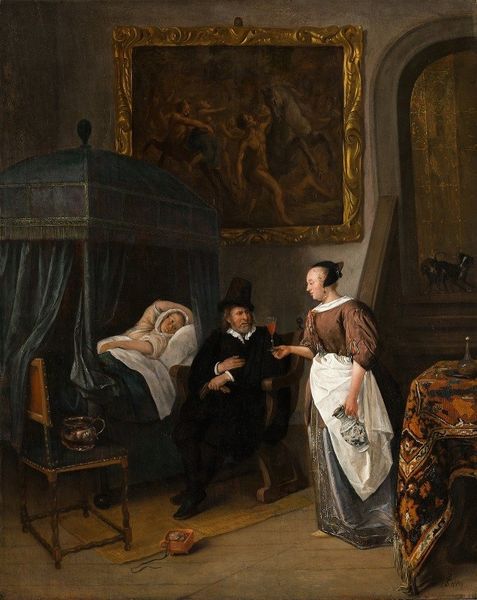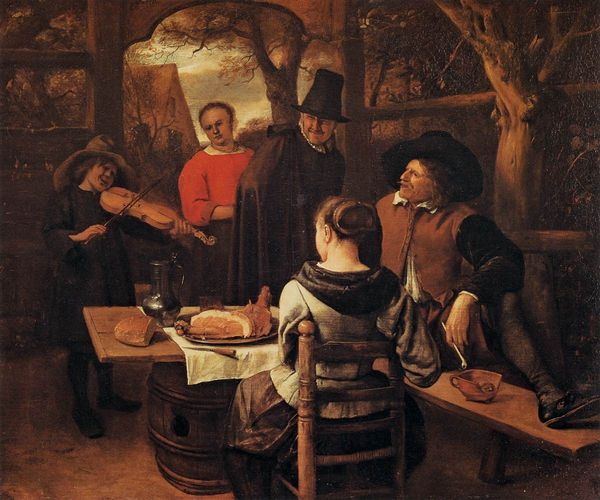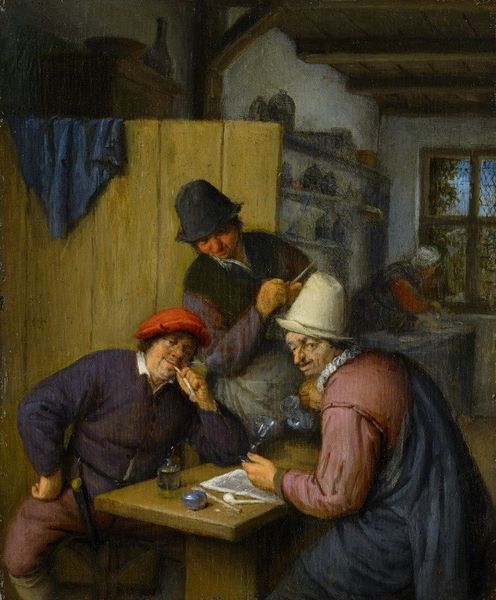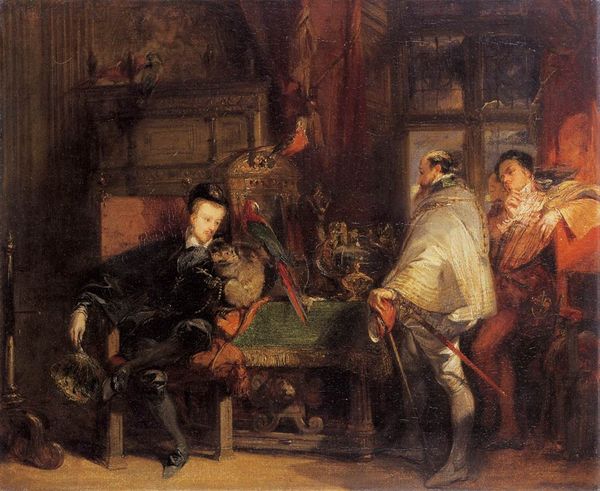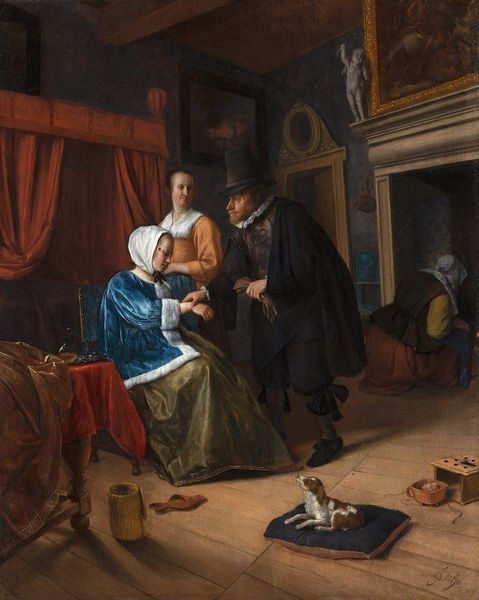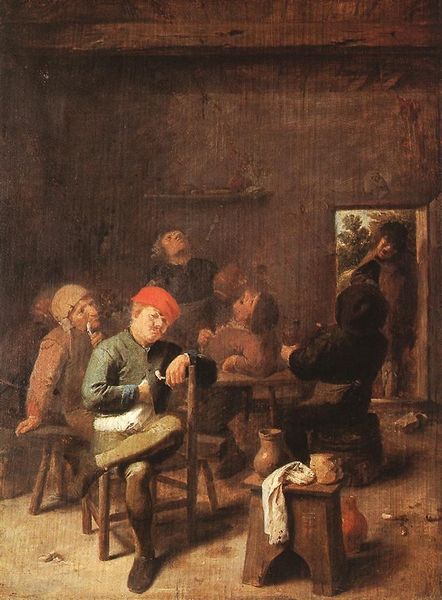
painting, oil-paint
#
portrait
#
figurative
#
painting
#
oil-paint
#
figuration
#
oil painting
#
group-portraits
#
romanticism
#
genre-painting
#
portrait art
Copyright: Public Domain: Artvee
Curator: Before us hangs Ernest Meissonier's "Dutch Burghers," crafted with oil paint sometime between 1833 and 1834. It’s an interesting group portrait in a genre setting. Editor: It strikes me as a study in subtle power dynamics. There’s a certain hushed atmosphere. A silent deal maybe, unfolding beneath layers of dark clothing and elaborate lace. Curator: Meissonier's intense focus on detail is apparent, particularly in the rendering of textiles— the ruffs, the drapery, and even the sheen on what appears to be a glass pitcher. It really begs questions about production: Where were these materials sourced, and who manufactured these luxury goods that signaled wealth and status? Editor: Indeed. The painting's composition invites critical thought on social stratification. The heavy fabrics, the intimate, enclosed space – it feels like a stage set where class and masculinity are performed. Look at how the darker palettes cloak these figures and obscure identity even as status shines from their attire. How does that contrast, for example, to portrayals of working-class individuals in contemporaneous art? Curator: Good point! It's difficult to escape pondering how each texture and tone served to both reflect and reinforce an elite status. We could delve into how the pigments themselves impacted Meissonier's execution... how his brushstrokes work to depict velvet versus a simple woolen drape, for example. The work itself becomes a commentary on labor through representation of materials. Editor: It almost romanticizes their power, doesn't it? But through a critical lens, we see the inherent bias: an artist subtly, perhaps unconsciously, celebrating those already holding economic and societal advantages while labor, class divisions, and lived precarity are obscured within a broader cultural context of colonialism and resource extraction. The glass pitcher on the table – what goods passed through these burghers’ hands and at what cost? Curator: Interesting perspective, particularly when we view it alongside contemporary discussions about ethical production and supply chains. Even this depiction of genre life becomes entangled in wider sociopolitical discourse through Meissonier's very deliberate material depictions. Editor: Right. In sum, though small, it’s an evocative work that acts as a microcosm for societal questions about how class is both crafted and portrayed through art. Curator: I find myself looking at how technique, the visible strokes and details, all build up not just images of things, but insights into what mattered at the time and what continues to be relevant.
Comments
No comments
Be the first to comment and join the conversation on the ultimate creative platform.

